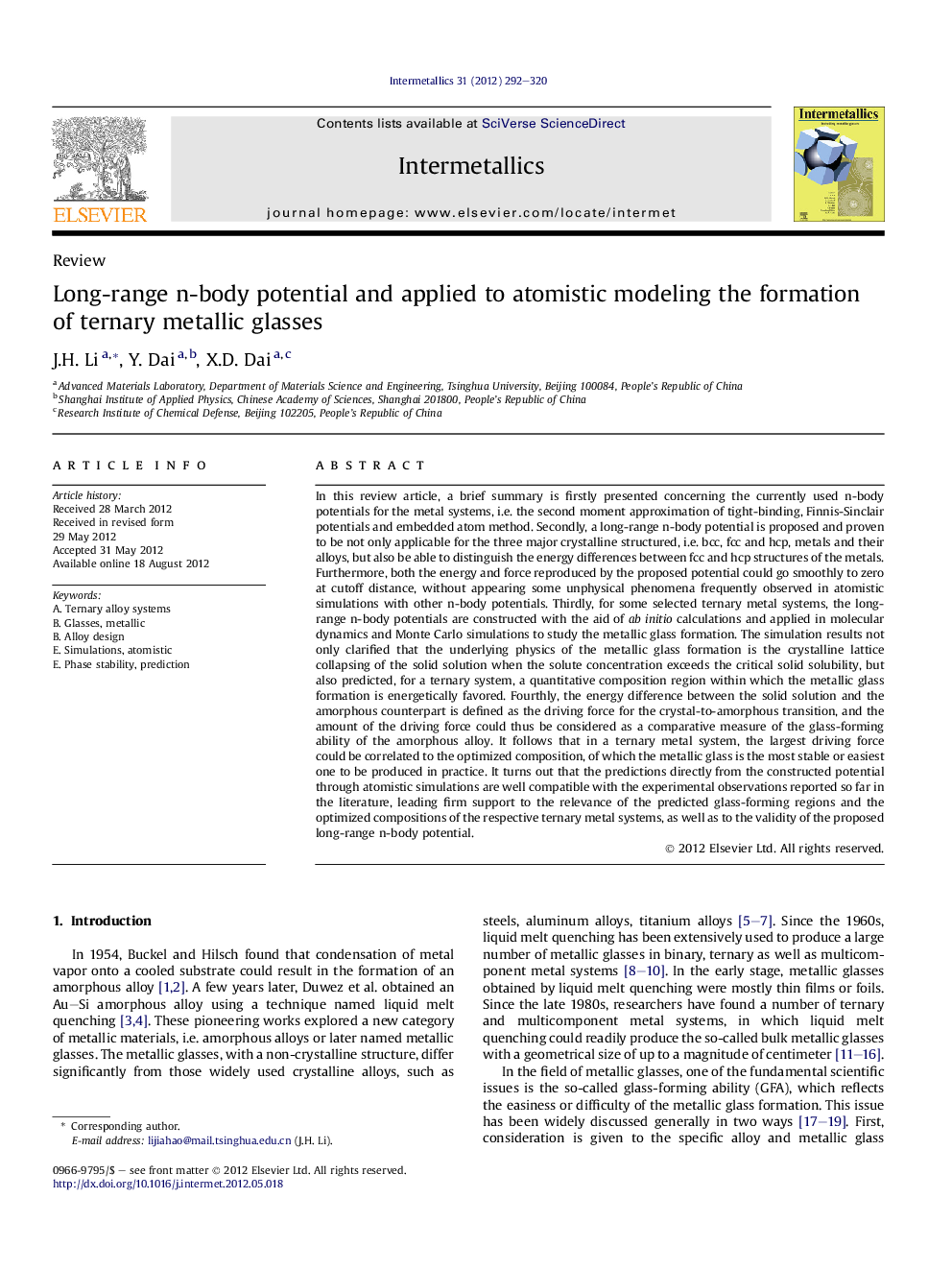| Article ID | Journal | Published Year | Pages | File Type |
|---|---|---|---|---|
| 1600386 | Intermetallics | 2012 | 29 Pages |
In this review article, a brief summary is firstly presented concerning the currently used n-body potentials for the metal systems, i.e. the second moment approximation of tight-binding, Finnis-Sinclair potentials and embedded atom method. Secondly, a long-range n-body potential is proposed and proven to be not only applicable for the three major crystalline structured, i.e. bcc, fcc and hcp, metals and their alloys, but also be able to distinguish the energy differences between fcc and hcp structures of the metals. Furthermore, both the energy and force reproduced by the proposed potential could go smoothly to zero at cutoff distance, without appearing some unphysical phenomena frequently observed in atomistic simulations with other n-body potentials. Thirdly, for some selected ternary metal systems, the long-range n-body potentials are constructed with the aid of ab initio calculations and applied in molecular dynamics and Monte Carlo simulations to study the metallic glass formation. The simulation results not only clarified that the underlying physics of the metallic glass formation is the crystalline lattice collapsing of the solid solution when the solute concentration exceeds the critical solid solubility, but also predicted, for a ternary system, a quantitative composition region within which the metallic glass formation is energetically favored. Fourthly, the energy difference between the solid solution and the amorphous counterpart is defined as the driving force for the crystal-to-amorphous transition, and the amount of the driving force could thus be considered as a comparative measure of the glass-forming ability of the amorphous alloy. It follows that in a ternary metal system, the largest driving force could be correlated to the optimized composition, of which the metallic glass is the most stable or easiest one to be produced in practice. It turns out that the predictions directly from the constructed potential through atomistic simulations are well compatible with the experimental observations reported so far in the literature, leading firm support to the relevance of the predicted glass-forming regions and the optimized compositions of the respective ternary metal systems, as well as to the validity of the proposed long-range n-body potential.
Graphical abstractGlass-forming reign and glass-forming ability derived from interatomic potentials: the energy difference between the solid solution and the amorphous counterpart is defined as the driving force for the crystal-to-amorphous transition, and the amount of the driving force could thus be considered as a comparative measure of the glass-forming ability of the amorphous alloy. The largest driving force could be correlated to the optimized composition, of which the metallic glass is the most stable or easiest one to be produced in practice. Figure optionsDownload full-size imageDownload as PowerPoint slide
